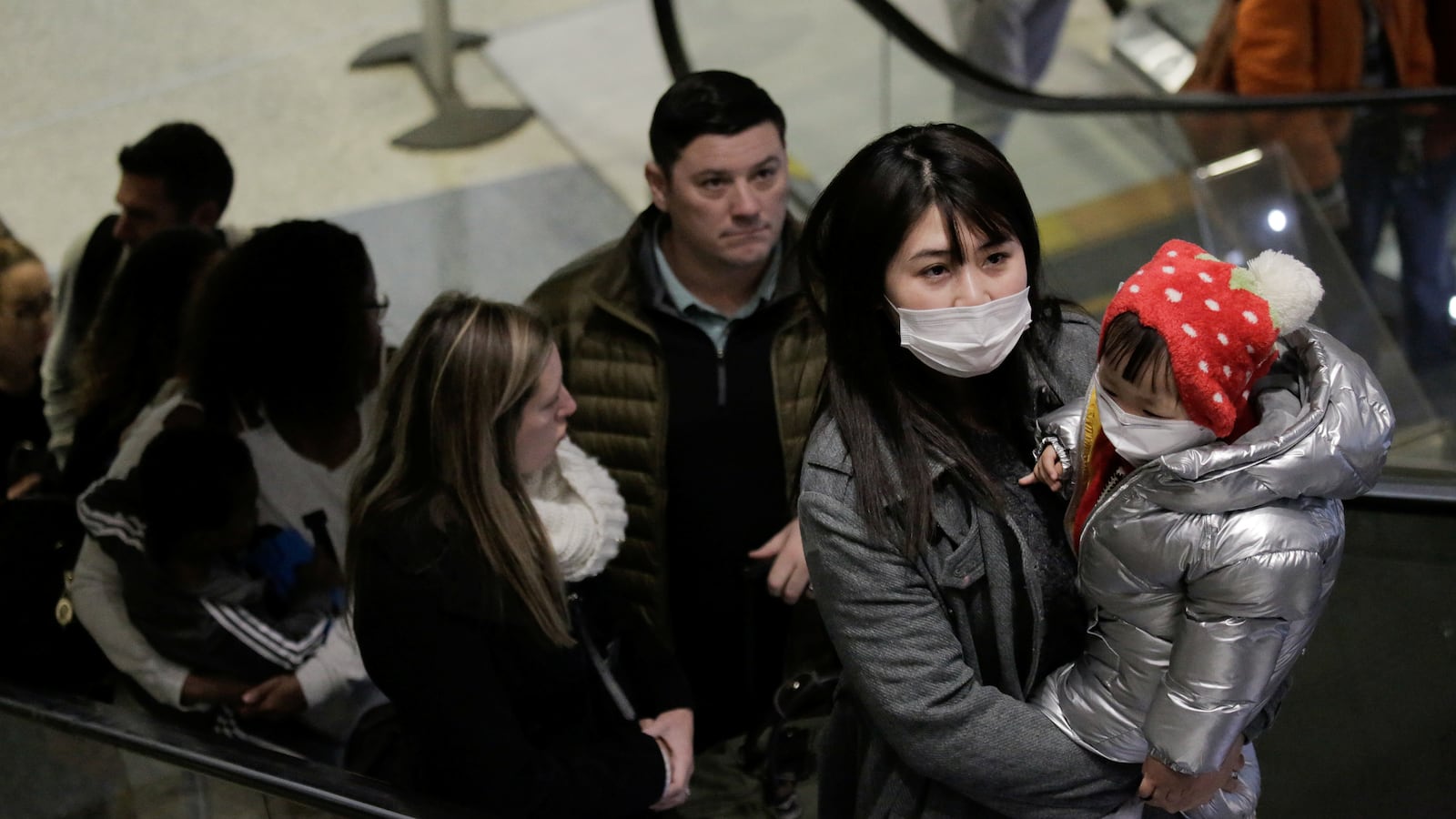Officials across the United States probed potential cases of a new coronavirus on Thursday, while a divided World Health Organization declined to declare the deadly outbreak a health emergency and authorities confirmed the first death outside the virus’ Chinese city of origin.
Brazos County, Texas, officials said they had isolated a potential 2019 novel coronavirus patient at home, pending precautionary testing. The individual had recently visited Wuhan, China, where 17 people have died and hundreds more have fallen sick since last month. Texas A&M University confirmed that one of its students was identified as the possible case there and said the “immediate health risk to the campus community” was low.
Meanwhile, a sick individual representing another potential case in California reportedly arrived at Los Angeles International Airport from Mexico City on an American Airlines flight at about 6:45 p.m. local time on Wednesday. They were taken to the hospital with flu-like symptoms, NBC Los Angeles reported.
Six exchange students at the University of Wisconsin-Platteville were under observation because they just returned from visiting Wuhan, where two of them live. None of them had symptoms and they were not quarantined.
It’s not yet clear when the results of the evaluation on the suspected cases will be available, but local health authorities in Los Angeles County said it was “very possible” the area will see cases of the virus, since so many people travel from China to Southern California. The LA County Department of Public Health said in a statement that there have been no confirmed local cases of the virus, that “currently the risk of local transmission is low,” and that the county responds to suspected cases by working with the U.S. Centers for Disease Control and Prevention “to assess and test.”
Officials with the CDC did not immediately respond to a request for comment from The Daily Beast regarding suspected cases.
A patient in Washington state was announced as the first official U.S. case of the virus on Tuesday.
Also on Thursday, an emergency committee convened in Geneva by the World Health Organization decided against declaring a global health emergency and planned to re-evaluate the issue in 10 days, while acknowledging the “urgency” of the situation. Such a declaration is rare and reserved for “serious, sudden, unusual or unexpected” outbreaks and would have given the organization broader authority to shape global responses to the virus, reported The New York Times. The organization said in a press release that committee members were split, with some believing it was “still too early” to designate the outbreak a global health emergency.
Two days earlier, the CDC announced the first U.S. case of the virus in Washington state: a man in his 30s who became ill days after returning from Wuhan, China on Jan. 15. Because of the man’s travel history, officials collected a clinical specimen and sent it to the CDC overnight, where laboratory testing confirmed the diagnosis through a real time reverse transcription-polymerase chain reaction test, also known as rRT-PCR.
The CDC said at the time that it was in the final stages of developing a version of the test that would be able to confirm cases outside of CDC facilities. Until those tests are shared with the CDC’s domestic and international partners, they must take place on site in Atlanta. The man in Washington state reportedly had close contact with at least 16 people since returning from China—before he was isolated from the public—and the CDC said Tuesday that it had deployed a team to trace his contacts and “determine if anyone else has become ill.”
During a recent update, hospital officials said the Washington patient was resting comfortably, making progress, and being cared for by a group of volunteer nurses.
The first death linked to the virus outside of Wuhan was confirmed by provincial authorities more than 600 miles north of that city on Thursday afternoon. The 80-year-old victim had lived in Wuhan—a major port city of 11 million people—for more than two months, according to the health department in the province of Hebei. Wuhan is now under total quarantine.
The man’s death marked the 18th fatality caused by the virus, which can infect both animals and people, and cause severe illnesses in the respiratory tract, including SARS. The CDC has confirmed limited person-to-person spread of the virus, but officials have not fleshed out just how easily it is spread. Associated symptoms include fever, cough, and trouble breathing. Roughly 800 people died during a 2003 SARS outbreak.
Last Friday, the CDC began entry screening of thousands of passengers at airports in San Francisco, New York, and Los Angeles—the U.S. airports that receive most travelers from Wuhan, China. Similar screenings were added this week in Atlanta and Chicago.
Eric Toner, a senior scientist with the Johns Hopkins Center for Health Security and the University’s School of Public Health, told The Daily Beast on Thursday that the current risk to the average person in the United States remained “low” but that screening methods were also “far from perfect.”
“The important thing is to identify people as early as possible, get them tested, and get them isolated,” said Toner. “That’s how you control the introduction of a contagious disease into a country.”
“But I’d be shocked if we don’t see some more cases,” he added.







